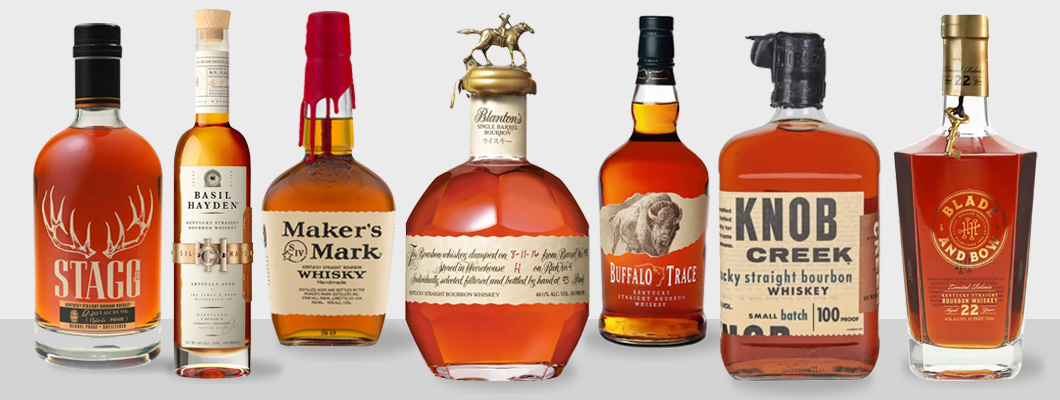
Bourbon: An American Spirit
Bourbon is a spirit that is uniquely American, like jazz that fills smoky speakeasies or apple pie. It's like a thread woven into the very fabric of American history. Every sip embodies a rich history, a testament to the craftsmanship and good 'ol patience that bring this amber liquid to life.
But did you know there is a specific set of legal requirements that guide its creation? How do these regulations contribute to the overall quality and tradition of Bourbon? Or what exactly makes this amber liquid so special? Let's explore how bourbon is made and see the journey of this amber liquid from grain to glass, as well as how it embodies the American spirit.
Bourbon is Steeped in American Tradition
Bourbon traces its roots back to the hardy pioneers of the 18th century, who made whiskey with the corn available to them. Although it can be made anywhere in the US, it's strongly associated with Bourbon County, Kentucky. Indeed, Kentucky produces 95% of all bourbon.
You see, Kentucky's limestone-filtered water helps to craft the slightly sweet, golden-brown bourbon we know and love by adding minerals that can enhance the flavor and create a smoother finish.
What is Bourbon?
Bourbon is a whiskey with a mash bill recipe of at least 51% corn by law, but other grains, like rye, barley, or wheat, called flavor grains, can join the chorus, creating a unique mash bill. Rye is Bourbon's second-most-used grain. It adds dry, spicy, and peppery flavors to the whiskey's character. On the other hand, wheat adds elegance and a soft, smooth character, often with hints of nuts and cinnamon.
Moreover, the law mandates aging straight Bourbon in brand-new white oak barrels for a minimum of two years. Furthermore, water is the only addition permitted to enhance flavor. These established regulations are essentially a safety net for Bourbon's quality and tradition.
It creates a standard for starting quality for consumers and safeguards the spirit's heritage. It also allows for innovation within the institution's framework. Every distillery can impart its unique character by applying different mash bill ratios, yeast strains, or charring techniques to create a broad variety of different flavor profiles within the given framework.
Fun Fact: A congressional resolution passed in 1964 made bourbon America's only official spirit.
The Epic Ballad of Bourbon: Steps in Making Bourbon
Every bottle tells a story of how bourbon is made, its journey that begins with the selection of grains and culminates in a spirit brimming with complex flavors.
The Mashing: A Sweet Symphony
In the fertile heartland of Kentucky, where sunshine kisses the golden cornfields, harvest the seeds of Bourbon's magic. For a grander transformation, start with a mash bill of at least 51% corn, rye, and malted barley, then grind the mixture of grains and mix it with water. Add a small amount of old mash from the previous distillation to ensure consistency across the batches. In whiskey-speak, it is referred to as "sour mash" and the amount of old mash added is known as "setback." Now, cook this grain mixture to convert starch into sugar.
Fermentation: A Spirited Dance
Next, once it's cooked, the sour mash goes to the fermenter, where it's cooled and the mischievous yeast is added. It dances through the mash, converting its sugars into a living Bourbon spirit. The bubbly concoction obtained is a low-alcohol brew called "distiller's beer." And so this is where Bourbon's heart truly begins to beat. Furthermore, there are legal restrictions in place, such as the fact that before entering the barrel, the mash must undergo distillation until it obtains a proof of no more than 160.
The Double Distillation: Fire and Transformation
For distillation, almost all American distilleries use still columns. Distillation quickens the heart. Following fermentation, "the distiller's beer" is sent on a fiery journey through copper stills. These vessels, coiled like serpents, are heated up to 200°F to separate the weak from the strong, leaving behind a potent low wine, but the spirit's journey isn't over yet. It undergoes a second distillation as low wine flows through a doubler, a fiery refinement that concentrates its essence, ensuring it meets the legal limit of 125 proofs before entering its slumber.
Fun Fact: The raw whiskey obtained at the end of distillation is known as "white dog."
The Oaken Cradle: Bourbon Aging Process
Finally, the bourbon finds its resting place in a brand-new, charred white oak barrel, where the bourbon aging process begins. The char, a deliberate scorching of the wood's interior that ranges from 1 to 4, causes wood sugar to caramelize. As the seasons change, the wooden barrel contracts and expands, which allows the bourbon to extract and develop a symphony of flavors like vanilla, caramel, and the subtle whispers of the oak itself. It gently sways within the oaken cradle as the law mandates that it must mature and deepen its character for over two years to qualify as straight Bourbon.
The Bottling: A Grand Finale
Finally, after years of slumber, the Bourbon awakens as a masterpiece ready to grace your glass. Each step, from choosing the grains to double distillation and, lastly, the slow waltz through time within the oaken cradle, has played its part in this epic story. You can taste the culmination of this uniquely American tradition with every sip. So raise a glass and savor the story whispered in every drop.
Types of Bourbon: A Creative Canvas
For both distillers and bartenders, different types of bourbon serve as a creative canvas. Types of bourbon can be classified based on factors such as grain bill, aging and barrel type, blending, and batch variations.
Based on Grain Bill Variation:
- Straight Bourbon: Straight bourbon has a grain bill, with at least 51% corn, providing a balance of sweetness, spice, and oaky notes. The remaining 49% can include rye, barley, and wheat to create subtle variations. It must be aged for at least two years in charred oak barrels, and distillers cannot add any extra ingredients for flavor or color. Examples include Knob Creek and Eagle Rare.
- Wheated Bourbon: This type of bourbon substitutes rye with wheat, creating a smoother and sweeter profile than traditional bourbon which makes it more approachable. It's suitable for a modern take on traditional cocktails like Old Fashioned. Examples include Maker's Mark and Larceny.
- High Corn Bourbon: This bourbon has a higher corn percentage of 70% and above. Due to its amplified sweetness, high-corn bourbon is ideal for cocktails that lean towards dessert-inspired flavors such as bourbon milk punch with a touch of cornbread sweetness or a summer julep with muddled berries that complement the high corn notes. Examples of high-corn bourbon include Old Charter and Tuthilltown Baby Bourbon.
- High Rye Bourbon: High Rye bourbon features a higher percentage of rye grain, around 35% in the mash bill compared to the standard bourbon minimum. Rye influence translates the flavor profile to a spicier side, with notes of pepper, cinnamon, and clove that complement the sweetness of corn. Examples include Wild Turkey Rye and Knob Creek Rye.
Based on Aging and Barrel Influence:
- Age Variations: Younger bourbons are bourbons that are aged for 2-4 years. These bourbons are light, bright with a profile simply perfect for summer-cocktails. Older bourbons are aged for over 10 years. The flavors develop deeper, richer even, and complex as it ages, and become perfect for sipping neat or creating sophisticated depth-driven cocktails.
- Barrel Finishes: Distillers will first age their bourbons in new charred oak barrels and then finish them in used barrels that have held other spirits, such as sherry, wine, or rum. This imparts a set of unique flavor characteristics on the bourbon but still allows distillers to make limited or experimental runs that might harbor unexpected notes. For example, the bourbon finished in a rum barrel is perfect for a tiki-inspired cocktail, just to give that little hint of bourbon complexity.
Types of Bourbon: A Spectrum of Flavors
| Feature | Type | Description | Example |
|---|---|---|---|
| Grain Bill Variation | Straight Bourbon | At least 51% corn, providing a blend of sweetness, spice, and oakiness. Option to incorporate rye, barley, and wheat. Aging for a minimum of two years in barrels made of charred oak. | Knob Creek, Eagle Rare |
| Wheated Bourbon | It replaces rye with wheat, resulting in a smoother, sweeter flavor profile compared to traditional bourbon. Wheated bourbon whiskey is well-suited for contemporary interpretations of classic cocktails such as the Old Fashioned. | Maker's Mark, Larceny | |
| High Corn Bourbon | It features a higher corn percentage, amplifying sweetness, and is ideal for dessert-inspired cocktails. | Old Charter, Tuthilltown Baby Bourbon | |
| High Rye Bourbon | It has a higher proportion of rye, which contributes to a spicier flavor profile that balances the sweetness of corn. | Wild Turkey, Knob Creek, Explore more high rye bourbons | |
| Blending | Small-Batch Bourbon | Crafted from a smaller selection of barrels, small batch bourbon offers a unique and nuanced flavor profile. | Woodford |
| Single Barrel Bourbon | It comes from a single barrel and is bottled as is, providing a distinctive flavor profile unique to each barrel. | Knob Creek | |
| Blended Bourbon | A blend of different-aged straight bourbons, occasionally combined with neutral grain spirits, offers a consistent flavor profile. Often more affordable than straight Bourbons. Also delicious. | Jim Beam Black | |
| Aging | Younger Bourbon | Aged 2-4 years, provide a lighter and brighter profile, ideal for summer cocktails. | |
| Older Bourbon | Aged 10+ years, develop richer and more complex flavors, perfect for sipping neat or creating sophisticated cocktails. | ||
| Barrel Influence | Bourbons aged in new charred oak barrels and finished in used barrels (sherry, wine, or rum) impart unique flavor characteristics. |
A Guide on Bourbon Tasting Notes
Bourbon boasts a complex flavor profile and promises a delightful bourbon-tasting journey. This bourbon-tasting guide provides recommendations to enhance your experience and appreciation for America's native spirit, along with complimentary cocktails and food pairings.
Setting Up:
This bourbon-tasting guide recommends using Glencairn glasses to elevate your experience because it traps the rich aroma of the bourbon, making the senses work in totality. The tulip shape concentrates aromas and enhances swirling. Perfect for neat pours and some cocktails, it is the go-to both for a beginner and bourbon enthusiasts.
Put up dim lights and bask in the warmth of good company when following this guide on bourbon tasting notes as this normally sets a comfortable environment where people appreciate the finer things in life.
It is also good to have some unsalted bread or crackers nearby and a glass of room temperature water for mouthwash. These would allow you to flush your taste buds in between tastes.
Also, in regards to the bourbon tasting guide, have your bourbons arranged in diversity regarding the grain bill and aging profile. This way, embark on a whiskey tasting experience as multifaceted as this venerable spirit remains to be.
Savoring the Bourbon:
- Color: It indicates the age and richness of the Bourbon. From light amber to deep hues, younger spirits hint at delicate flavors, while darker shades promise bolder profiles. But color isn't the only indication. Try swirling the bourbon and watching the "legs" or "tears" form. Thicker and slower trails suggest a richer experience with high-proof Bourbon while faster-moving ones hint at a lighter style with low-proof Bourbon.
- Aroma: Swirling also frees a symphony of aromas previously trapped. As you hold the glass close without getting your nose too close, take big whiffs. The aroma of bourbon usually contains many notes like vanilla, caramel, fruit, and oak. The complexity opens up with each sniff. When air interacts with the bourbon, the aroma profile can change, showing new layers.
- Mouthfeel: Take a small sip and swirl it around with slightly parted lips, coating your entire mouth. This maximizes the tastebud party! It is also known as the Kentucky Chew Technique. Bourbon's texture can range from thick and creamy to thin and watery in the mouth. Denser legs can indicate a Bourbon with a richer mouthfeel and a fuller body, whereas more delicate legs may indicate a lighter, smoother Bourbon.
- Flavor: A bourbon's flavor profile may include sweetness, spiciness, bitterness, and more. Vanilla and caramel are gifts from the aging barrels, while oak whispers hints of wood and smoke. Additional fruity notes, such as apple or peach, may emerge, as well as floral touches for a lighter character. For spiciness, spice joins the party, along with cinnamon, nutmeg, or clove. Sweetness can include nutty or toffee flavors. For more experienced palates, bolder notes like leather or tobacco emerge.
- Finish: The finish refers to the aftertaste that continues after swallowing. It can be short or long, smooth or harsh, depending on quality. A long finish then lingers on the palate, whereas a short finish vanishes quickly.
Bourbon with Cocktail and Food Pairings
Well, since exploring the types of bourbon and the bourbon tasting guide, let us now uncover how the unique flavor profiles of bourbon pair perfectly with delectable dishes.
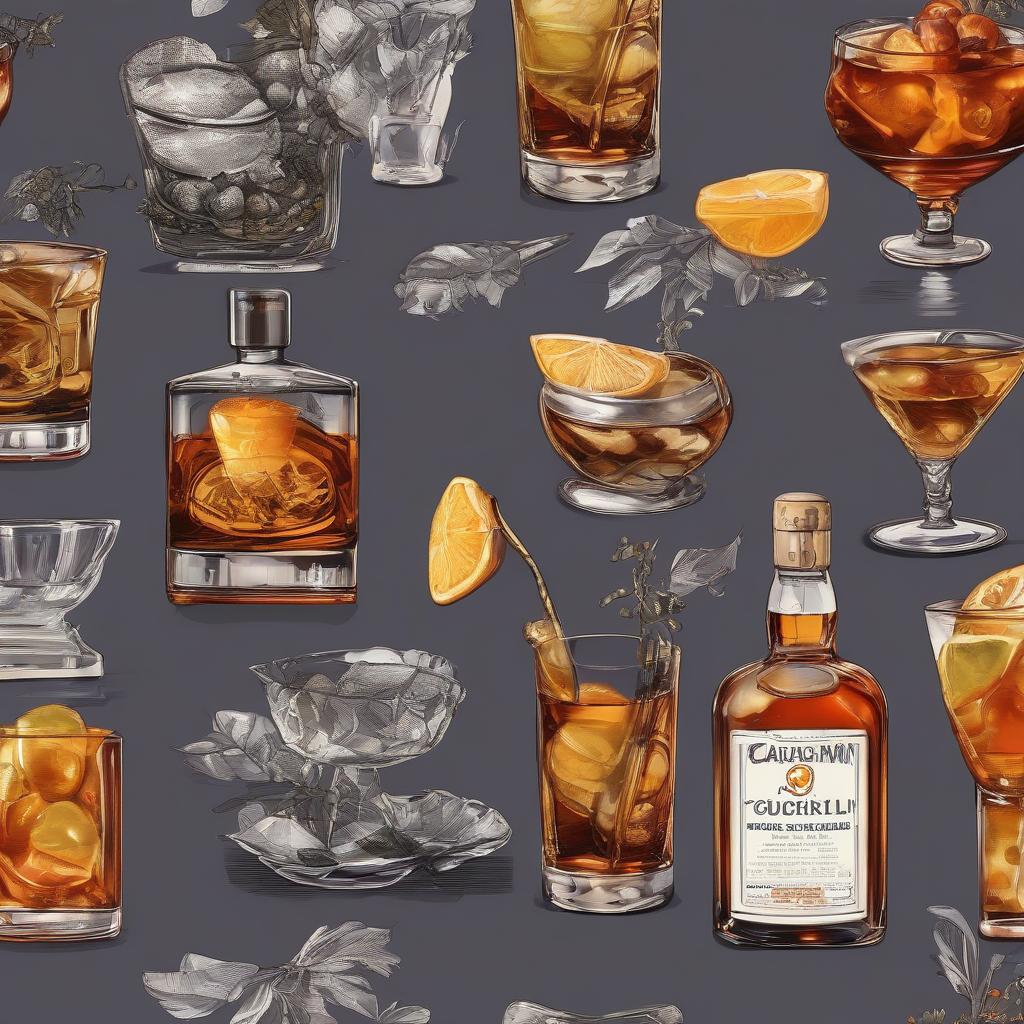
High-corn Bourbon: Sweet and easy to drink. Indulge in its sweetness with a vibrant Julep featuring muddled berries or a creamy Bourbon Milk Punch. You can even enhance the experience with complimentary snacks like mixed nuts, pretzels, or creamy cheeses like brie. This bourbon's sweetness also shines alongside richer desserts like Bourbon Pecan Pie, which offers a delightful balance of flavors.
Wheated Bourbon: Exceptionally gentle and elegant in flavor. Sip or mix it for enhanced pleasure in a classic Manhattan or an Old Fashioned with a drizzle of orange marmalade. Enjoy with light-flavored dishes such as grilled chicken or seafood for the perfect marriage of flavors. For a delicious counterpoint, serve it with a pan-seared steak with a bourbon glaze for a sweet and savory combination that will meld together beautifully in your mouth.
High Rye Bourbon: Known for its spicy and bold flavor. Pair it with a dynamic Sazerac or a robust Boulevardier to enhance the experience. It also goes well with bold flavors like barbecued meats, peppery cheeses, or the delightful bitterness of dark chocolate. To take it a step further, try pairing it with Smoked Gouda and Bourbon Jam. The smokiness of the cheese complements the oaky notes of the jam, creating a symphony of flavors that tantalize your senses.
Mixology Tips
Are you ready to elevate your cocktail skills? Check out the mixology tips below for two classic cocktails: the Old Fashioned and the decadent Bourbon Milk Punch. These recipes are perfect for any occasion, from cozy nights to lively celebrations, and are certain to impress your guests. So, why not whip up a batch of these delightful cocktails and raise a toast to good company and great drinks? Grab your shaker and let's start mixing!
| Drink Name | Ingredients | Instructions |
|---|---|---|
| Classic Old Fashioned | 2 oz. Bourbon, 1/2 tsp. sugar, 2 dashes Angostura Bitters, and orange peel garnish |
1. In a rocks glass, mix sugar and bitters. 2. Add bourbon and ice, then stir gently. 3. Pour the orange peel-derived oils over the drink. |
| Bourbon Milk Punch | 1 cup bourbon, 1 cup strong-brewed coffee, 1 cup of sugar, 1 cup of whole milk, 1 cup of heavy cream, and 1 tsp. ground nutmeg |
1. Combine all ingredients except the nutmeg in a pitcher. 2. Stir until the sugar dissolves. 3. Chill for at least 2 hours. 4. Strain and garnish with a sprinkle of nutmeg. |
And so here we conclude the journey of bourbon, from grain to glass, soaked in individual American tradition, with individual mash bill requirements, the aging process in charred oak barrels, and the entire spectrum of flavors. This is just the right time to visit BourbonandWhisky.Com, because they offer a wide selection of bourbons, from straight whiskeys to high-rye varieties, at competitive prices and easy delivery. Whether you just started your discovery journey with Bourbon, are a seasoned enthusiast, or are looking to give a gift to someone you love, there is always the perfect bottle waiting for you.
Frequently asked questions:
Where bourbon is produced?
Bourbon is produced anywhere in the United States, although it's strongly associated with Kentucky, where around 95% of all bourbon is produced. Distilleries across the US are allowed to create this spirit as long as they meet the legal regulations.
How to drink bourbon?Bourbon can be enjoyed neat, on the rocks, or with a splash of water. A neat bourbon allows one to experience its full flavor, whereas a splash of water or on the rocks may reveal subtler notes.
Are all bourbon whiskey?All bourbon is whiskey, but not all whiskey is bourbon. Bourbon is a special type of whiskey with its own unique flavor. There are specific rules that bourbon must follow, including manufacturing it in the USA using at least 51% corn and aging it in special barrels.

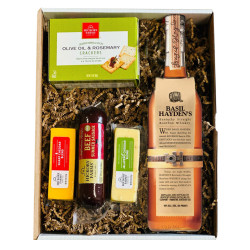
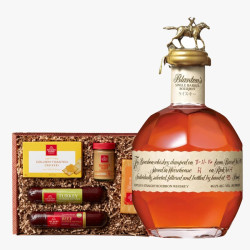


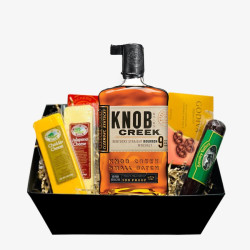
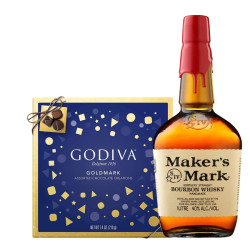













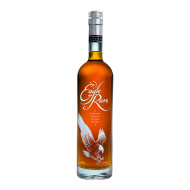
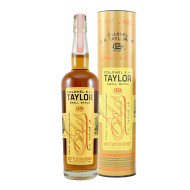
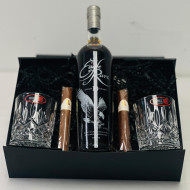
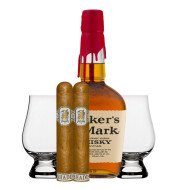
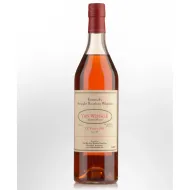
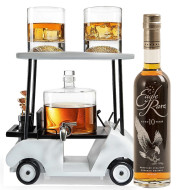
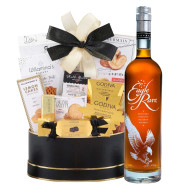
Leave a Comment